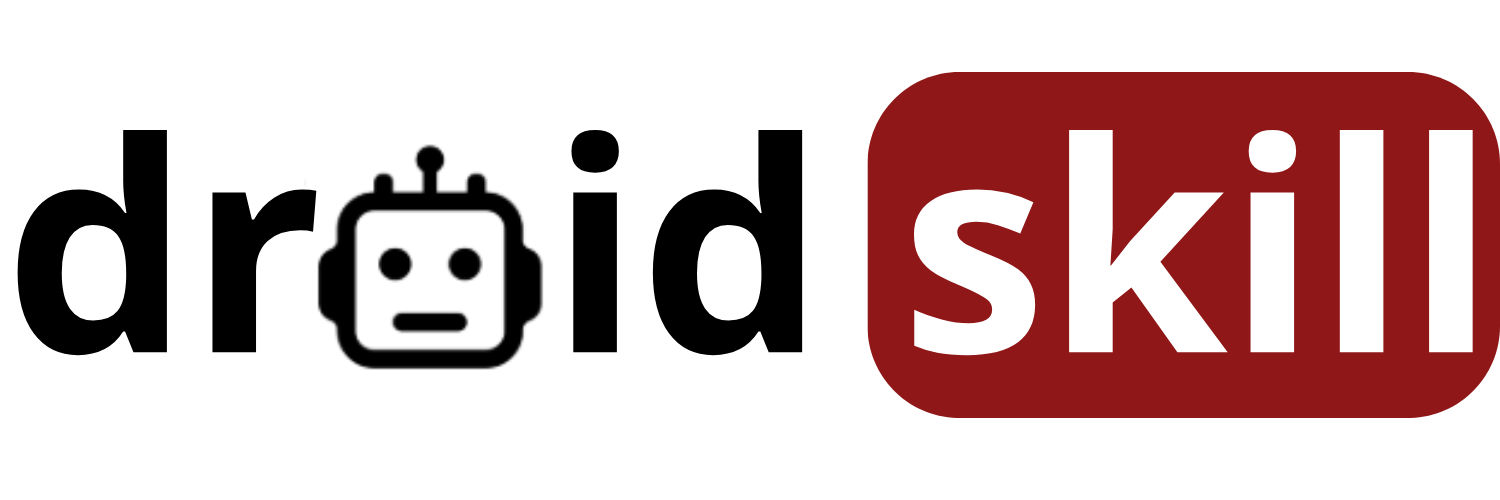Hey Android enthusiasts! Ready to supercharge your device and unlock its full potential? We've got some game-changing tips and tricks to optimize your Android's performance, making it faster, smoother, and more responsive. Let's dive in!
1. Greenify
Greenify is your secret weapon against battery-draining apps. It intelligently hibernates apps when you're not using them, preventing them from running in the background and hogging resources. This not only saves battery life but also frees up RAM, resulting in a snappier Android experience. Think of it as a digital bouncer, keeping unruly apps in check.
Greenify is a powerful tool, but it's important to use it wisely. Don't hibernate essential apps that you need to receive notifications from, such as messaging apps or email clients. Experiment to find the right balance between performance and functionality.
Download Greenify from the Play Store
2. CCleaner
CCleaner is like a digital janitor for your Android device. It sweeps away junk files, clears caches, and removes unnecessary data that can slow down your phone. Over time, your Android accumulates a lot of digital clutter, and CCleaner helps you keep things tidy and running smoothly. It's a must-have for maintaining optimal performance.
Regularly running CCleaner can make a noticeable difference in your Android's speed and responsiveness. It's especially helpful if you tend to download a lot of apps or browse the web frequently. Just be careful not to delete anything important, such as saved passwords or personal files.
Download CCleaner from the Play Store
3. Nova Launcher
Nova Launcher is a customizable home screen replacement that can breathe new life into your Android device. It's lightweight, fast, and packed with features that allow you to personalize your home screen to your liking. Ditch the clunky stock launcher and experience a smoother, more responsive interface with Nova Launcher.
One of the best things about Nova Launcher is its ability to customize animations and transitions. By reducing or disabling these effects, you can significantly improve your Android's performance. It's a simple tweak that can make a big difference.
Download Nova Launcher from the Play Store
Search Nova Launcher on Play Store
4. SD Maid
SD Maid is a powerful system cleaning tool that goes beyond the basics. It digs deep into your Android's file system to find and remove orphaned files, temporary data, and other junk that can accumulate over time. It's like a professional cleaning crew for your device, ensuring that everything is running smoothly and efficiently.
SD Maid is particularly useful for cleaning up after uninstalling apps. Often, when you uninstall an app, it leaves behind residual files that can take up valuable storage space. SD Maid can identify and remove these orphaned files, freeing up space and improving performance.
Download SD Maid from the Play Store
5. Servicely
Servicely is a more advanced tool that allows you to control which services are running in the background on your Android device. It can prevent unnecessary services from starting up and consuming resources, resulting in improved battery life and performance. However, it requires root access, so it's not for everyone.
If you're comfortable with rooting your Android device, Servicely can be a powerful tool for optimizing performance. However, it's important to use it with caution, as disabling essential services can cause problems. Do your research and understand what each service does before disabling it.
Download Servicely from the Play Store
Search Servicely on Play Store
Beyond Apps: Essential Android Optimization Tips
While apps can be helpful, there are also several things you can do manually to optimize your Android's performance:
1. Keep Your Software Updated:
Make sure your Android operating system and apps are always up to date. Updates often include performance improvements, bug fixes, and security patches that can significantly enhance your device's overall performance. Neglecting updates can leave your device vulnerable and sluggish.
2. Clear Cache and Data Regularly:
Apps store cached data to speed up loading times, but over time, this cache can become bloated and slow down your device. Regularly clear the cache and data of apps you use frequently to keep them running smoothly. You can do this in the app's settings or through the Android system settings.
3. Uninstall Unused Apps:
Get rid of apps you no longer use. These apps take up valuable storage space and can run in the background, consuming resources even when you're not actively using them. A clean and lean app drawer is a happy app drawer.
4. Disable Unnecessary Animations:
Android's animations and transitions can look nice, but they can also contribute to lag, especially on older devices. Disable or reduce these animations in the developer options to improve responsiveness. To access developer options, go to Settings > About Phone and tap on the Build Number seven times.
5. Use a Lightweight Launcher:
As mentioned earlier, using a lightweight launcher like Nova Launcher can significantly improve your Android's performance. Stock launchers can often be resource-intensive, so switching to a more efficient alternative can make a noticeable difference.
6. Manage Background Processes:
Some apps run processes in the background even when you're not actively using them. These processes can consume battery life and slow down your device. Use the Android system settings to manage background processes and restrict apps that are unnecessarily running in the background.
7. Optimize Storage:
A full storage drive can significantly impact your Android's performance. Transfer photos, videos, and other large files to a computer or cloud storage to free up space. Consider using an SD card to expand your storage capacity if your device supports it.
8. Factory Reset (as a Last Resort):
If all else fails, a factory reset can be a drastic but effective way to restore your Android to its original state. This will erase all data on your device, so be sure to back up your important files before proceeding. A factory reset can often resolve persistent performance issues caused by software conflicts or accumulated junk.
Understanding the Root Causes of Android Slowdowns
Before we delve deeper into advanced optimization techniques, let's understand why Android devices tend to slow down over time. Several factors contribute to this phenomenon:
1. Software Bloat:
Over time, Android devices accumulate a lot of software bloat, including pre-installed apps (bloatware), cached data, temporary files, and orphaned files left behind by uninstalled apps. This bloat consumes valuable storage space and can slow down your device.
2. Resource-Intensive Apps:
Some apps are simply more resource-intensive than others. Games, social media apps, and video editing apps can consume a lot of CPU power, RAM, and battery life, leading to performance issues, especially on older devices.
3. Background Processes:
Many apps run processes in the background even when you're not actively using them. These processes can consume battery life, use up RAM, and slow down your device. Managing background processes is crucial for optimizing performance.
4. Fragmentation:
Over time, the files on your Android's storage drive can become fragmented, meaning that they are scattered across different parts of the drive. This can slow down file access times and impact overall performance. While Android's file system is designed to minimize fragmentation, it can still occur over time.
5. Outdated Software:
Running an outdated version of Android can lead to performance issues. Updates often include performance improvements, bug fixes, and security patches that can significantly enhance your device's overall performance. Neglecting updates can leave your device vulnerable and sluggish.
6. Insufficient RAM:
RAM (Random Access Memory) is the memory your Android uses to run apps and processes. If your device doesn't have enough RAM, it will start swapping data to the storage drive, which is much slower. This can lead to significant performance slowdowns.
7. Full Storage:
A full storage drive can significantly impact your Android's performance. When your storage is full, your device has less space to store temporary files and cached data, which can slow down loading times and overall responsiveness.
Advanced Optimization Techniques for Power Users
If you're a power user and want to take your Android optimization to the next level, here are some advanced techniques to consider:
1. Rooting Your Device:
Rooting your Android device gives you root access, which allows you to modify the system software and install custom ROMs. This can unlock a whole new level of customization and optimization possibilities. However, rooting can also void your warranty and potentially brick your device if done incorrectly. Proceed with caution and do your research before rooting.
2. Custom ROMs:
Custom ROMs are modified versions of the Android operating system that are often designed to be more lightweight and efficient than the stock ROM. They can also include features and customizations that are not available on the stock ROM. Installing a custom ROM can significantly improve your Android's performance, but it requires rooting your device and flashing a new ROM, which can be risky.
3. Custom Kernels:
The kernel is the core of the Android operating system. Custom kernels are modified versions of the kernel that can be optimized for performance, battery life, or both. Installing a custom kernel can improve your Android's performance, but it requires rooting your device and flashing a new kernel, which can be risky.
4. Overclocking:
Overclocking involves increasing the clock speed of your Android's processor. This can improve performance, but it can also generate more heat and drain battery life. Overclocking requires root access and a custom kernel that supports overclocking.
5. Undervolting:
Undervolting involves reducing the voltage supplied to your Android's processor. This can improve battery life and reduce heat generation, but it can also potentially lead to instability. Undervolting requires root access and a custom kernel that supports undervolting.
6. Using a Task Killer:
Task killers are apps that can kill running apps and processes. While they can free up RAM and potentially improve performance, they can also be counterproductive. Android is designed to manage RAM efficiently, and killing apps can actually force them to restart, which can consume more resources. Use task killers sparingly and only when necessary.
7. Greenify (Advanced Features):
Greenify has some advanced features that can further optimize your Android's performance. For example, it can automatically hibernate apps when you lock your screen. However, these advanced features require root access.
Conclusion: A Faster, Smoother Android Experience Awaits!
By implementing these tips and tricks, you can significantly optimize your Android's performance and enjoy a faster, smoother, and more responsive experience. Whether you're a casual user or a power user, there's something here for everyone. So, go ahead and give your Android a performance boost!
Remember to experiment and find what works best for you. Every Android device is different, and what works for one device may not work for another. Don't be afraid to try different techniques and see what yields the best results. And most importantly, have fun!


